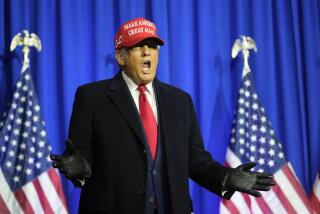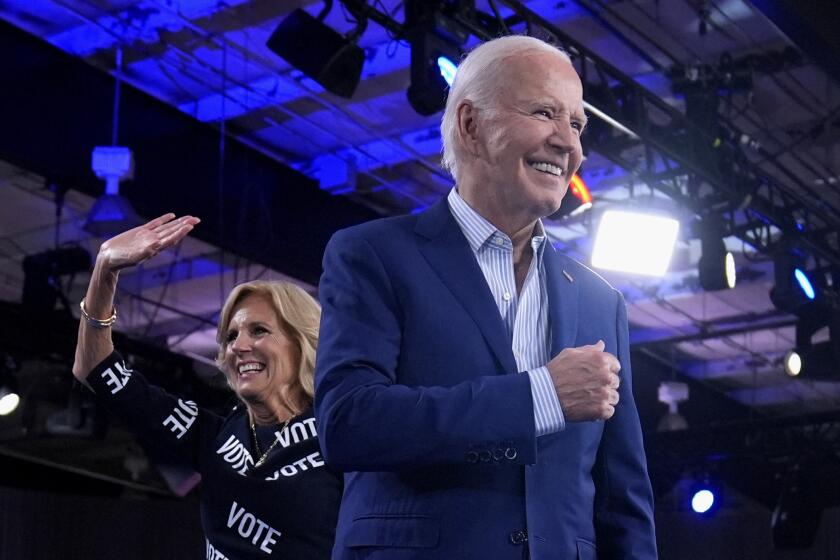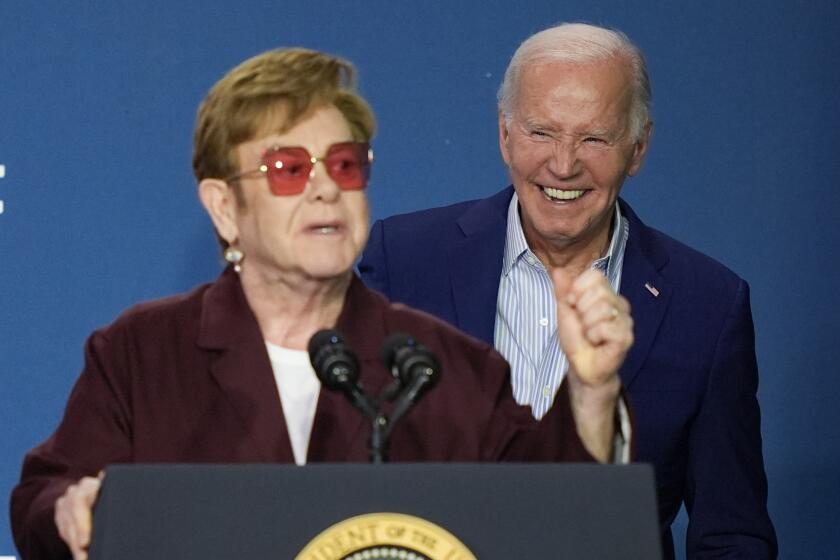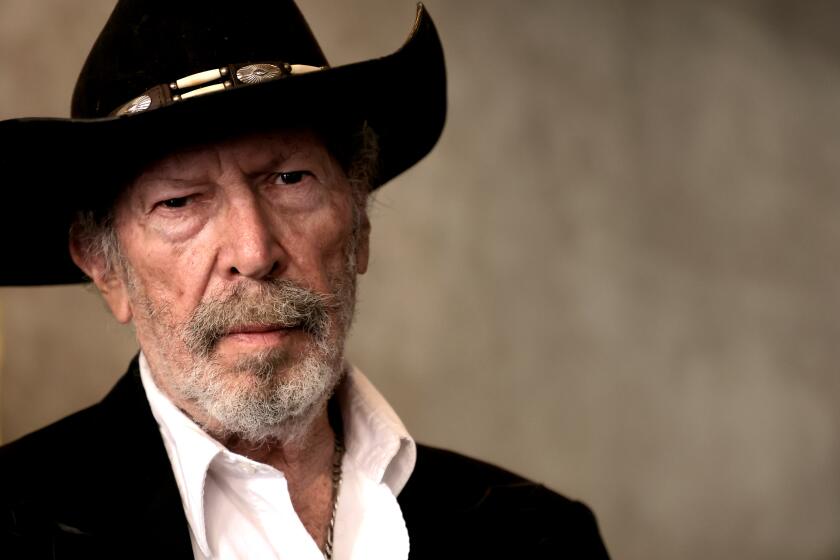Trump moves quickly in bid to revamp America’s trade policy

It was quick and easy for President Trump to fulfill his campaign promise to withdraw from the Trans-Pacific Partnership.
With a stroke of his new presidential pen, he buried the massive Pacific free-trade agreement that the Obama administration had painstakingly negotiated, even though the 12-nation accord had been moribund for the last year after losing political support. It had little chance of being ratified by Congress.
The real questions are: What will Trump replace it with? And when and how will he remake America’s economic relations with the rest of the world?
Nobody really knows for sure what Trump will do on trade because he has spoken only in generalities, threatening high tariffs and other tough measures against countries and American companies that move operations abroad.
Trump’s goal is to reverse the trade deficit and bring back jobs to U.S. shores. To many, he has sounded alarmingly protectionist, although it isn’t clear how much of that is merely rhetoric to bring trading partners to the negotiating table.
Trump’s trade policies will probably become clearer with his approach to reshaping the North American Free Trade Agreement with Canada and Mexico, which has been in force since 1993 and accounts for about $1 trillion of U.S. merchandise trade.
The president said Monday that he would begin renegotiating NAFTA at “the appropriate time,” but White House spokesman Sean Spicer said that Trump had already spoken to Mexican President Enrique Pena Nieto and with Canadian Prime Minister Justin Trudeau about his desire to reopen NAFTA negotiations.
“And I think as he meets with both of these individuals over the next 30 days or so, that’s gonna be a topic,” Spicer said.
Trump’s appointments suggest that the administration is serious about taking a sharply different, more aggressive tack on trade than recent past administrations, particularly involving China, the United States’ top trading partner.
Yet Trump’s Cabinet officials also include international business people and investors who have generally backed free trade. Trump’s secretary of State nominee, Rex Tillerson, said that he did not oppose the Trans-Pacific Partnership.
“That is one X factor,” said Lori Wallach, director of Public Citizen’s Global Trade Watch. “Is he going to be able to simply implement what he’s stated or will he be getting a pushback from his Cabinet as well as the congressional leadership?”
One strategy that Trump confirmed Monday was that he would be pursuing bilateral trade talks instead of multiparty deals like the Trans-Pacific Partnership.
“We’re going to have trade, but we’re going to have one on one, and if somebody misbehaves, we’re going to send them a letter of termination, 30 days, and they’ll either straighten it out or we’re gone,” Trump told reporters after meeting with union leaders in the White House.
An advantage of bilateral trade negotiations is that the U.S. can focus on a single country and not have to make concessions to satisfy a third party, although multilateral deals can offer commercial and geopolitical benefits that apply to many countries in a single swoop.
Trump’s pick for Commerce secretary assures lawmakers he is not anti-trade »
The Trans-Pacific Partnership, which stood to be the world’s largest regional trade accord, accounting for 40% of global economic output, was the linchpin of the Obama administration’s strategy to bind the region around an American-designed system of trade and commerce, essentially providing a counterweight to China’s increasing influence in the region.
Although the Pacific deal was concluded more than a year ago, it never took effect, and Trump’s action Monday made clear it would not be revived, as some congressional Republicans had sought. The U.S. already has a free-trade deal with six of the Trans-Pacific Partnership countries, but the pact would have added Japan, Vietnam and Malaysia. It would have uniformly lowered or eliminated tariffs on many goods, and created common standards and rules of practice on a wide range of trade and investment activities.
The Pacific agreement was widely rejected by congressional Democrats, unions and consumer groups as favoring corporations and not taking a strong position against currency manipulation or providing better protections for patients, workers and the environment.
“We appreciate that Donald Trump laid it in its grave,” said Thea Lee, deputy chief of staff at the AFL-CIO, referring to the Trans-Pacific Partnership. “But that’s only a first and small step.”
While there are signs of more aggressive trade actions on the part of Trump, Lee said it wasn’t clear how Trump’s approach — one of his popular refrains is “buy American” — would manifest itself in actual trade policies.
“The incoming administration has a narrower vision of America first,” she said. “It could be negotiated and be worse for working people.”
Alan Deardorff, a professor of public policy and economics at the University of Michigan, worried that Trump’s “intent to renegotiate NAFTA could be very harmful if it restores the tariffs and other barriers to trade between the U.S. and Mexico that existed prior to NAFTA. That would destroy, but not replace, the complicated North American supply chains that have grown under NAFTA and sustain much of U.S. manufacturing.”
Canada and Mexico are the United States’ top two export destinations. American shipment of goods to Mexico totaled $212 billion last year, up from just $4.5 billion in 1993 when NAFTA was signed. Yet imports from Mexico have surged even more, particularly cars and car parts and electronics, to a total of about $271 billion in the first 11 months last year from almost $40 billion in 1993. The result was a U.S. trade deficit of $58.8 billion through November last year, contrasted to a small surplus of $1.7 billion in 1993.
Trade with Canada is more balanced, with the U.S. running a shortfall of about $9 billion last January to November.
Trade experts agree that NAFTA is ripe for revisions, given its age and the need to update and incorporate rules and standards for areas like ecommerce and other aspects reflecting a more high-tech, service-based economy.
America’s biggest trade deficit in goods is with China, about $319 billion through November last year. Trump and his nominees to oversee trade have had the harshest words for China, pledging to upend the way Washington deals with China’s trade and commercial relations. The U.S. has 20 free-trade agreements in force, but none with China.
Gary Clyde Hufbauer, a senior fellow at the Peterson Institute for International Economics, reckons it won’t be difficult for Trump to launch renegotiations on NAFTA. “Both governments said, ‘We’re ready, bring it on,’” he said of Mexico and Canada.
The negotiations are almost certain to take many months and will most likely be led by Trump’s nominee to be the U.S. trade representative, Robert Lighthizer, a veteran trade lawyer, and Wilbur Ross, named to serve as the new Commerce secretary. Both are expected to be confirmed by the Senate. Peter Navarro, a UC Irvine professor who was named by Trump to lead a new White House-based trade office, is also expected to play a role.
At his confirmation hearing last week, Ross, a billionaire financier who has invested in distressed steel, textile and other manufacturing companies, spoke critically of the low wages of Mexican workers. He suggested that he might push to renegotiate NAFTA’s “rules of origin” — a provision that allows a certain percentage of content made outside of NAFTA countries to be shipped duty-free when they are included in the final product traded among the U.S., Canada and Mexico.
Trump has vowed to slash regulations. Where he might start and the hurdles he faces »
Ross also expressed support for strengthening the federal government’s procurement practice of favoring domestic suppliers.
Many in Canada appear to be bracing for increased tariffs and reduced exports to the U.S., some experts there said. “Everybody has come to terms with the idea that they need to pay a higher price to access the U.S. market,” said Domenico Lombardi, a global economist at the Center for International Governance Innovation in Waterloo, Canada.
James Bacchus, a former Democratic House member from Florida and onetime chairman of the World Trade Organization’s appellate body, said it was much too early to tell how the U.S. would approach the negotiations, much less what the shape of a revised NAFTA might look like.
“The Trump administration has not yet laid out its negotiating agenda, nor explained what its bottom line will be,” he said. If Trump doesn’t get a sufficient amount of what he wants, he has warned that he would withdraw from NAFTA outright.
But Bacchus said that was an unlikely scenario. “What would that be,” he asked, “or is that simply a negotiating tactic?”
Follow me at @dleelatimes
ALSO:
Reality check: Manufacturers returning to U.S. may mean jobs for robots, not people
Why this is the perfect time to invest in infrastructure, and why it probably won’t happen
Millennials aren’t big spenders or risk-takers, and that’s going to reshape the economy
More to Read
Get the L.A. Times Politics newsletter
Deeply reported insights into legislation, politics and policy from Sacramento, Washington and beyond. In your inbox three times per week.
You may occasionally receive promotional content from the Los Angeles Times.






